This post may contain affiliate links. Read our disclosure policy here.
Whether you’re a beginner cook or want to learn how to roast any vegetables to perfection, you’re at the right place. This post shares all my secrets to achieving a delicious side dish!

Oven-Roasted Vegetable Secrets
Forget about sheet pans filled with charred, dry, or wet and soggy roasted veggies! Today I’m sharing how to roast vegetables, including the tools needed to get the job done, how to chop them and season them, and my best recipes.
Roasting vegetables brings out their flavor and caramelizes them, yielding a healthy side dish that kicks up nutrition and deliciousness in every family meal. My kids even eat broccoli when I roast it! So, let’s cook!
What You Need to Roast Vegetables
The list below includes ingredients and kitchen tools you’ll need to roast vegetables worthy of being featured on a magazine cover.
- Large sheet pan: the bigger the pan, the more veggies you can add in a single layer.
- Parchment paper: optional, but it does prevent sticking and reduces the amount of clean-up.
- Oil: olive oil, avocado oil, and canola oil are your best options. Each has a high-smoke point and helps add a golden-brown glow.
- Seasonings: your favorites. You’ll find a lot of tasty ideas below.
Which Vegetables Roast Well Together
When selecting vegetables to roast, the best combinations are made with varieties with the same cook times. Below, I’ve curated a list featuring different vegetables that pair well together.
- Root vegetables: cauliflower, Brussels sprouts, cubed sweet potatoes.
- Summer blend: zucchini, yellow squash, tomato, and bell pepper.
- Peppers and onions: sliced onion, bell pepper of any color, and minced garlic.
- The BEST cabbage: sliced cabbage (any color), onions, and minced garlic.
- Thanksgiving blend: Brussels sprouts, butternut squash, and beets.
- Stir-fry blend: broccoli, thinly sliced carrots, sugar snap peas, and sliced mushrooms.
- Spring veggies: asparagus, green peas, and yellow squash.
- Curry vegetable blend: chopped cauliflower, cubed butternut squash, and chickpeas.
- Southwest: bell pepper, zucchini, onions, and canned black beans.

There are so many options, but another honorable mention would be frozen vegetables! Yes, you can roast frozen veggies of any kind. It gives them a delicious, nutty flavor, and while their edges won’t be as crisp or toasty, it’s definitely much tastier than steaming.
The Steps for Roasting Vegetables
Here are the blueprint cooking directions for perfect roasted veggies of any kind!
- Prep
Wash and chop your vegetables in even sizes and shapes, whether it’s 1-inch cubes or ½-inch thick strips; this will help them cook simultaneously. - Season
Spread the vegetables in an even layer on a lined baking sheet, drizzle with 1 tablespoon olive oil for each pound of veggies, and season with ½ teaspoon salt, and ½ teaspoon of seasoning. - Bake
Roast until the vegetables are fork-tender and golden brown. The cooking time will vary based on which veggie you use; reference the chart below to know how long to program the kitchen timer.
How Much Space Do You Need on the Pan?
There should be enough space between the veggies for each piece to lay flat, and you can see the pan’s surface between pieces. In some cases, a second sheet pan may be necessary. Otherwise, overcrowding the pan can cause the veggies to steam and become soggy.
What Temperature to Roast Vegetables
Vegetables can be roasted between 375F and 425F, but my preferred temperature is 400F. At this heat level, the vegetables quickly develop that golden-browned exterior and tender texture.
How Long to Roast Vegetables
Curious how long it will take to roast your choice of veggies? Reference the list below and find out! Any highlighted veggies are linked to a recipe for you try.
Keep in mind the time is based on the thickness of the veggie AND a 400F preheated oven. If you want to roast your veggies at 425F, reduce the cooking time by 5-10 minutes.
| Vegetable | Roast Time |
|---|---|
| Brussels sprouts, halved | 30 min |
| Broccoli, florets | 15-20 min |
| Cabbage, ½-inch thick slabs | 25-30 min |
| Cauliflower, florets | 25-30 min |
| Carrots, 1-inch rounds | 30-40 min |
| Beets, 1-inch cubes | 40-45 min |
| Butternut squash, 1-inch cubes | 25 min |
| Acorn squash, 1-inch cubes | 25 min |
| Celeriac root, 1-inch cubes | 30-35 min |
| Fennel, 1-inch wedges | 40 min |
| Turnips, 1-inch cubes | 30 min |
| Parsnips, 1-inch cubes | 30 min |
| Summer squash, 1-inch cubes | 20 min |
| Eggplant, 1-inch cubes | 20 min |
| Bell peppers, ½-inch thick strips | 30 min |
| Onions, ½-inch thick strips | 30 min |
| Asparagus spears | 20 min |
| Cherry tomatoes | 20 min |
| Corn, husked | 25 min |
| Mushrooms, sliced | 20 min |
| Green beans | 25 min |
How to Know when Roasted Vegetables are Done
Once the vegetables have a golden brown crust and are fork-tender in the center, they’re ready! In fact, cooking vegetables according to texture and color is far more accurate since some ovens run hotter than others. So around the 5-minute mark, grab a fork, and test the veggies for doneness.
Spices for Roasted Vegetables
Aside from salt and pepper, plenty of spice and herb mixes will amp up the flavor of your roasted veggies. Each amount is based on one pound:
- Salt: ½ teaspoon
- Black pepper: ½ teaspoon
- Roasted vegetable seasoning: 2-3 teaspoons
- Garlic powder: ½ teaspoon
- Curry powder: 1 teaspoon
- Italian seasoning: 1 teaspoon
- Taco seasoning: 2 teaspoons
Tips & Tricks
The following tips, combined with the directions above, will help you achieve golden crisp veggies and navigate scenarios you might run into when roasting multiple kinds of vegetables.
Center Shelf
Before you preheat the oven, place the rack in the middle of the oven. If it’s higher, the vegetables will burn.
How to roast multiple veggies
While mixing everything can be tempting, I recommend making separate rows of each or dividing into two pans. This makes removing veggies that are finished cooking easier when the others have a good 5-10 minutes more.
How to roast multiple pans of veggies
If you are roasting 2 sheet pans of veggies, place the second directly beneath the middle shelf, and swap them out halfway through baking.
You wash, you dry
Once you’ve washed the veggies, dry them thoroughly with a clean kitchen towel. If there is any water, they will steam.
Storing & Reheating Roasted Veggies
If you have leftover veggies or prepped a batch for future meals, allow them to cool down to room temperature before storing them in an airtight container and refrigerating for up to 4 days.
To reheat, you can go the quick route and microwave them for 2 minutes. The veggies will steam and won’t be as crisp, but the flavors are all there. If you want crisp them up a little, preheat the oven to 400F, spread the veggies onto a sheet pan, and bake for 10 minutes or until heated through.
How to Serve Roasted Vegetables
Roasted veggies are more than just a side dish; they can be the main course if you know how to serve them. It’s a terrific topping for a winter salad or a bowl of savory oats. You can also serve roasted veggies with a fried egg or on top of creamy risotto.
I usually stir leftover roasted veggies into a frittata like this one, toss them with pasta and grated Parmesan, or with cooked meat and stir-fry sauce. Try all these tasty ideas, and thank me later!
How to Roast Any Vegetable Step-by-Step

Ingredients
- 16 ounce bag cubed butternut squash
- 16 ounce bag Brussels sprouts halved
- 2 medium beets, peeled and cubed
- 2 tablespoons olive oil
- 1 teaspoon salt
- ½ teaspoon black pepper
- ½ teaspoon garlic powder
Instructions
Prep:
- Preheat the oven to 400F. Lightly grease a large baking sheet with olive oil or cooking spray.
Season:
- Add the butternut squash, Brussels sprouts, and beets to the baking sheet, making separate rows of each.
- Drizzle the veggies with olive oil and season with salt, pepper, and garlic powder. Toss the veggies to combine, keeping them in separate rows (if you combine all of them, the beets will change the color of the other veggies).
Bake:
- Bake for 35-40 minutes until the veggies are golden brown and tender.



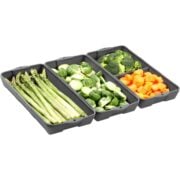
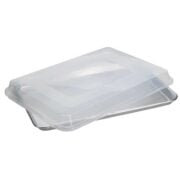
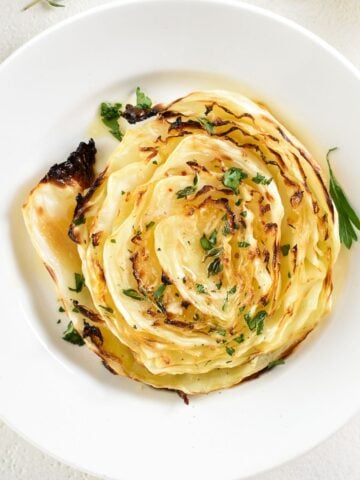
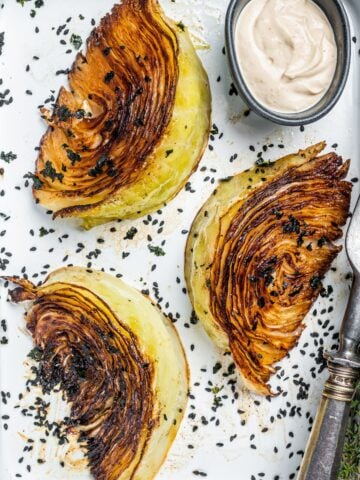
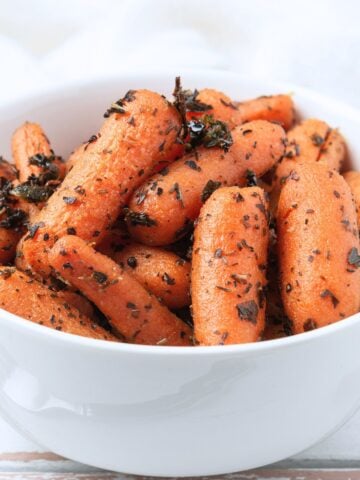
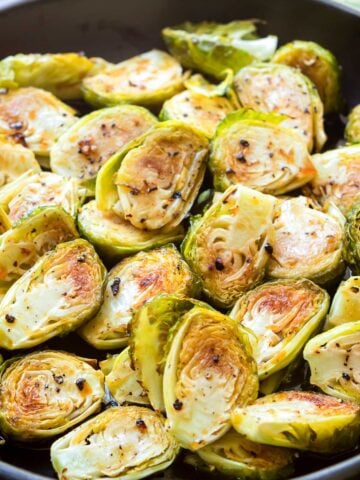
Shanae says
Tried this recipe for roasted veggies last night and it was incredible.